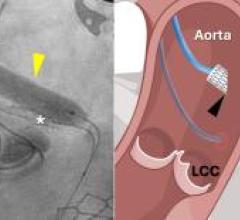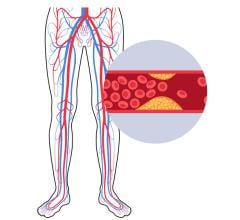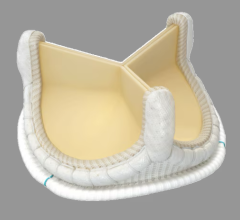
December 19, 2018 — A new set of appropriate use criteria (AUC) released Dec. 17 by a group of cardiovascular professional societies provide guidelines for peripheral artery interventions. The purpose of the AUC is to provide guidance to clinicians who may refer patients for revascularization treatments and to interventionalists and surgeons themselves. With the field of peripheral artery disease constantly evolving, it is imperative to offer tools and resources that physicians can utilize to provide the best care for their patients.
The AUC were jointly released by the American College of Cardiology (ACC), American Heart Association (AHA), Society for Cardiovascular Angiography and Interventions (SCAI) and the Society for Vascular Medicine (SVM).
The following are key points to remember listed on the ACC website:
- The patient scenarios are not intended to be comprehensive, but instead to address scenarios common in clinical practice with associated assumptions and definitions. A total of 45 clinical scenarios with up to six intervention options each were developed. A separate, independent rating panel then evaluated each indication using a scoring scale from 1-9, with scores of 7-9 corresponding to “appropriate,” scores from 4-6 corresponding to “may be appropriate,” and scores of 1-3 corresponding to “rarely appropriate.”
- An appropriate treatment is one where the potential survival or health outcomes benefits exceed the potential negative consequences of the treatment strategy. “May be appropriate” suggests that a treatment should be contingent on individual patient circumstances and shared decision making based on patient and provider preferences. Multiple therapies may be required in an individual patient, and “rarely appropriate” is not equivalent to “inappropriate” or “never appropriate.”
- Emphasis was placed on adhering to and exhausting medical therapy to achieve maximal benefit in situations where symptom management was desired or incidental disease was discovered. Other factors that were considered included symptom burden, anatomic distribution and ischemic burden.
- Factors to consider when evaluating appropriateness for intervention for hemodynamically significant renal artery stenosis include: the indication (i.e., chronic kidney disease, hypertension, cardiac destabilization or incidentally discovered), the severity of symptoms (including the rapidity of decline in renal function and/or response to antihypertensive medications), and whether renal artery stenosis is unilateral versus bilateral or affecting a solitary viable kidney.
- Factors to consider when evaluating appropriateness of lower extremity intervention for claudication include: previous medical therapy, lesion location (aortoiliac, femoral-popliteal or below knee), and whether the lesion is stenotic versus a chronic total occlusion.
- Both endovascular and surgical treatment for critical limb ischemia were considered "appropriate" by the rating panel for all anatomic subsets (aortoiliac, femoral-popliteal or below knee). Continuation or intensification of medical therapy is not considered a reasonable treatment in patients with this diagnosis.
- Appropriate peripheral procedures for asymptomatic disease were based on expert consensus and included specific scenarios where arterial access would facilitate other necessary cardiovascular procedures, some of which may be life-saving (e.g., transcatheter aortic valve replacement [TAVR], hemodynamic support devices, etc.).
- Factors that should be considered when choosing between endovascular treatment options include the anatomic location and length of the lesion, and presence of discrete/focal stenosis, diffuse stenosis or chronic total occlusion.
- Factors that should be considered when evaluating appropriateness of secondary lower extremity intervention for in-stent restenosis or bypass failure include presence of diffuse versus focal stenosis, whether the bypass is stenotic versus thrombosed, and whether the bypass graft is a vein or prosthetic conduit.
For more information: www.onlinejacc.org


 January 15, 2026
January 15, 2026 









